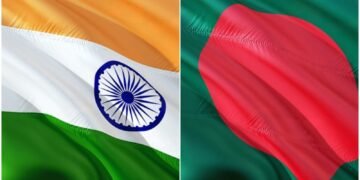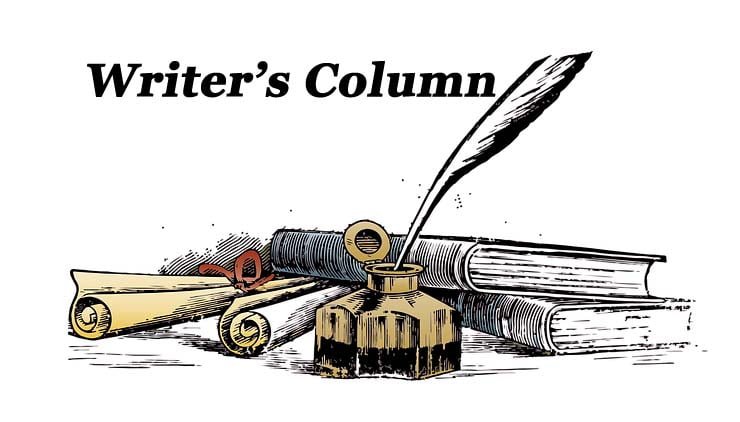Turkey, formerly known as Turkiye, under the leadership of President Recep Tayyip Erdogan, has undergone a shift in its identity as it seeks to de-westernise and assert its Muslim-majority character. Despite this rebranding, Turkey is grappling with a severe economic crisis marked by a staggering 60 per cent inflation rate and a significant 750 basis point increase in the central bank’s interest rate.
Despite these challenges, Erdogan secured a third term as President. The name change is viewed by many as symbolic. Nonetheless, Turkey remains engaged with the international community, with Erdogan actively involved as a negotiator, if not a peacemaker, in the Russia-Ukraine conflict that erupted in February 2022. Furthermore, Turkey is once again pursuing EU membership, a goal that has eluded it for decades, as Brussels continues to deliberate on its accession.
The use of “Bharat” as a parallel to “Turkiye” reflects a trend in national identity assertion. President Droupadi Murmu and Prime Minister Narendra Modi issued invitations for the G-20 summit in New Delhi under the names President of Bharat and Prime Minister of Bharat, rather than the traditional titles of President of India and Prime Minister of India.
Similar to Erdogan’s efforts in Turkey, Modi is on a mission to decolonize and “Indianise” India, embodying a Hindu reassertion, particularly through his party, the Bharatiya Janata Party, closely aligned with the ideologically influential Rashtriya Swayamsevak Sangh (RSS) which advocates Hindu supremacy. The shift to “Bharat” signifies a nostalgic aspiration for an ancient Hindu India, though it is regarded by some as a somewhat quixotic gesture.
For the majority of Indians, “Bharat” remains largely an official term, with “India” being the preferred everyday reference across linguistic, regional, and cultural boundaries. While “Bharat” and its various forms are present in many Indian languages, it’s the North Indian, Hindi version that isn’t commonly used.
The Narendra Modi government’s adoption of “Bharat” in official invitations reflects how it’s presented in official Hindi, aligning with constitutional terminology where “India, that is Bharat…” is established. This use of “Bharat” in official communications, such as “Bharat Sarkar” or Bharat government, is not a radical departure since it’s a recognised and formal name for the country.
The opposition bloc’s adoption of the name “INDIA” has provided immediate political fodder, prompting Modi to employ the constitutional alternative of “Bharat” in response. This move is primarily a strategic maneuver to counter his rivals rather than a profound ideological shift.
Modi has cautioned his cabinet colleagues against being drawn into the Bharat/India debate and instead urged them to vigorously address the attack on Sanatan Dharma by DMK leader Udayanidhi Stalin. The focus here isn’t solely on the DMK but rather on the Congress, which continues to align with the DMK, potentially portraying itself as anti-Hindu. Modi aims to tap into Hindu sentiments in preparation for the 2024 elections, recognising that his government has limited achievements to showcase over the past decade, including his first term in office.
For ordinary people grappling with the challenges of inflation and job scarcity, the G-20 summit and achievements like Chandrayaan-3 and Aditya-L1 may seem distant and inconsequential. The lofty promises of India’s ascent to the world’s fifth-largest economy, with aspirations for third place, can appear somewhat disconnected from the daily struggles of the populace.
Prime Minister Modi is well aware that these grand achievements have limited impact on the lives of ordinary citizens. While the debate between “Bharat” and “India” may not strike a chord with the masses, he is banking on the cultural appeal of Sanatan Dharma to resonate with the people of Uttar Pradesh, a state crucial for the BJP’s electoral prospects.
Modi, along with the BJP and RSS, is often perceived as having ambitious intentions to reshape India into a predominantly Hindu nation, potentially eroding its religious pluralism. While Modi may champion India’s diversity and democracy, it’s often seen as a reference to linguistic diversity and a vision of democracy rooted in ancient Indian village and city oligarchies.
This perspective appears to leave little space for religious minorities such as Muslims and Christians, while Sikhs, Buddhists, and Jains are sometimes viewed within an amorphous Hindu framework. Modi’s approach bears similarities to Erdogan’s efforts in Turkey, aiming to establish an artificial unity based on religion. This aligns with the long-term agenda of certain Hindu parties seeking to assert a Hindu-centric identity in India.
The BJP/RSS plan to homogenise India is unlikely to succeed due to the inherent diversity across the vast expanse of the country, which acts as a natural centrifugal force. The heterogeneity of India is a well-established fact, and there is little need for liberals and secularists to emphasise this point. The cohesion of India is not solely reliant on concepts like Bharat and Sanatan Dharma; rather, it is grounded in its geographical unity, once dismissed as a mere “geographical expression.” Attempted political regimentation, as envisioned by Modi and his associates, risks creating unnecessary cultural fault lines.
Cultural nationalism, Sanatan Dharma, and Bharat may be touted as key elements, but they are potentially leading towards a disaster in the making. The true essence of national identity is shaped by the geographical features such as valleys, hills, mountains, river systems, and coastlines that give rise to diverse communities and distinct social patterns. The play on words like “Bharat” may not significantly impact the core aspects of national identity; it is the tangible reality beyond the words that holds the utmost importance.
Politicians, in contrast to poets, often craft words with strategic intent, seeking to influence and shape public perception. Their objective is to entwine minds in the intricacies of language. However, the balance tilts in favour of reality over rhetoric. People tend to base their reactions and judgments on tangible experiences rather than the mere manipulation of words. Consequently, the utilisation of terms like “Bharat” is unlikely to divert people’s attention significantly, as the weight of reality consistently holds the upper hand in shaping their perspectives and decisions.
(The writer can be reached at dipaknewslive@gmail.com)

























